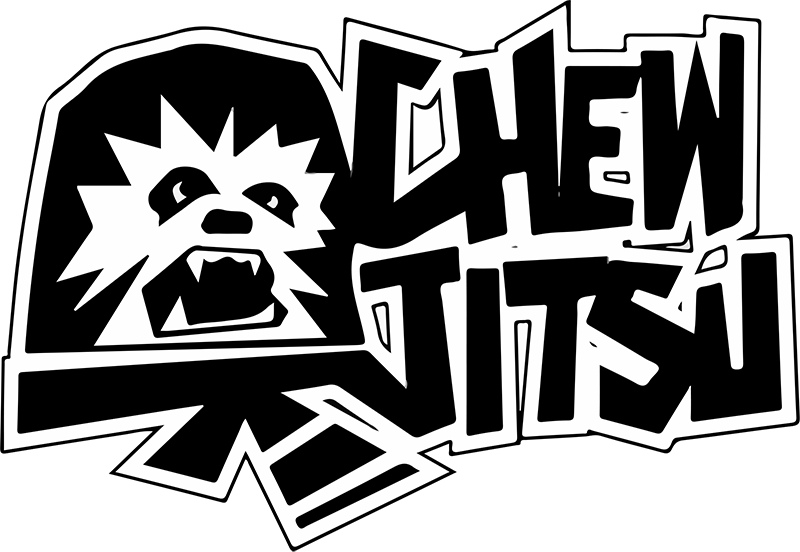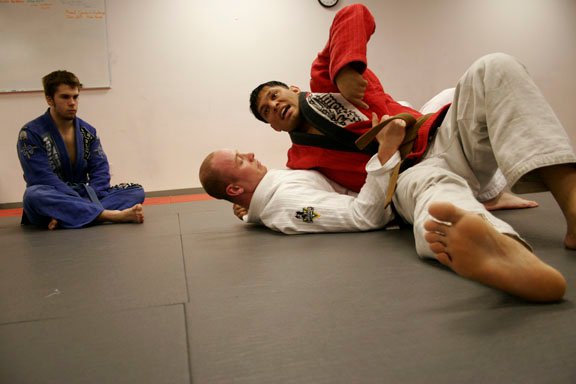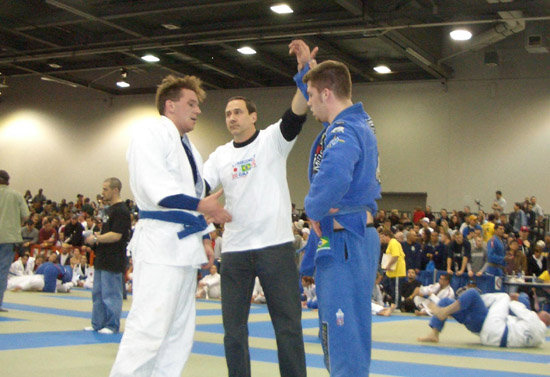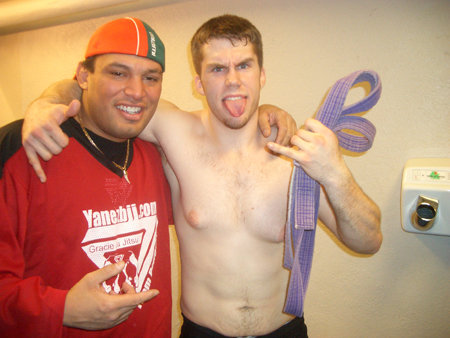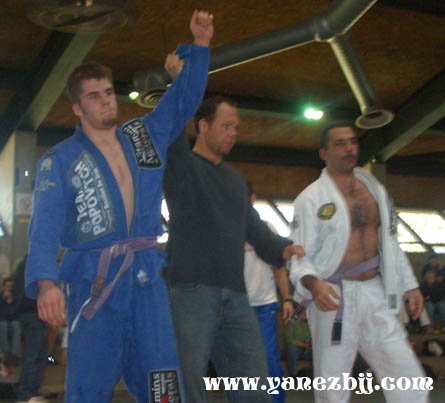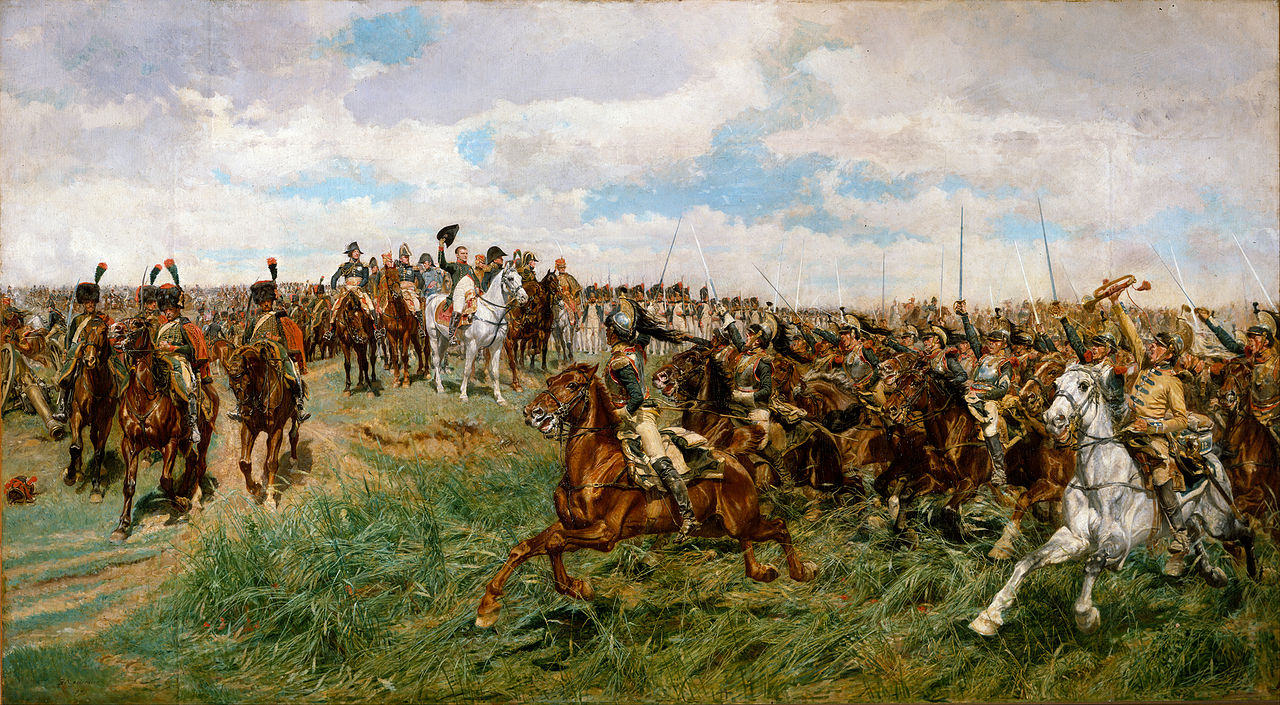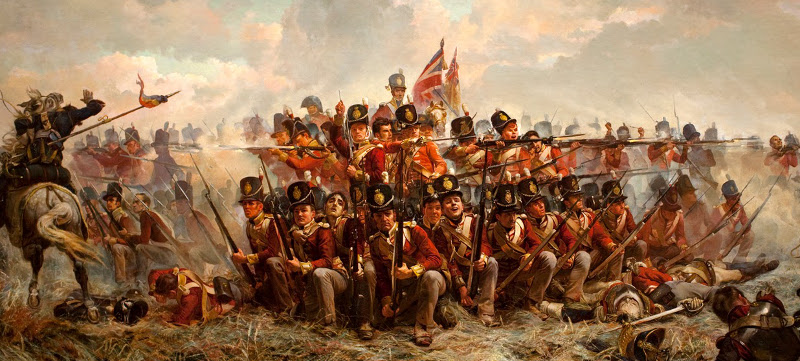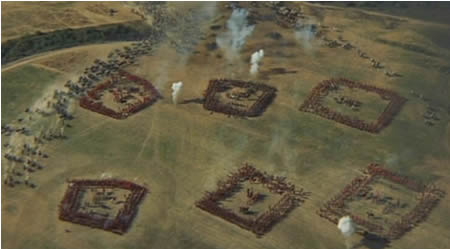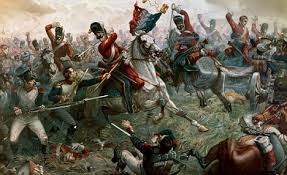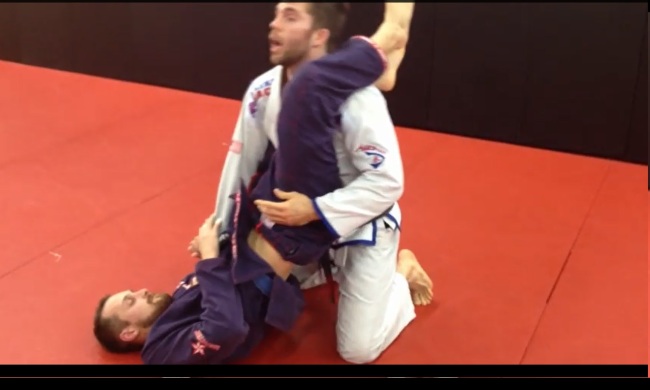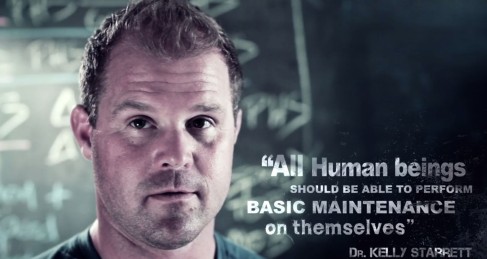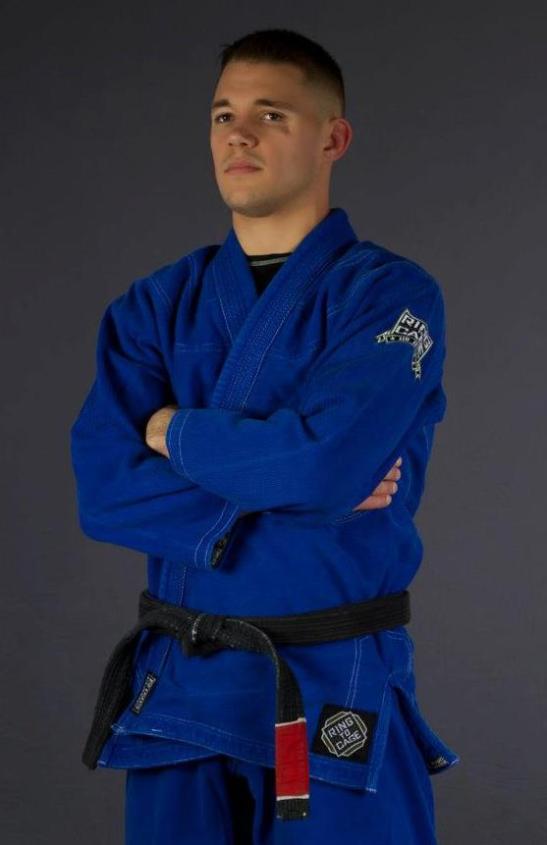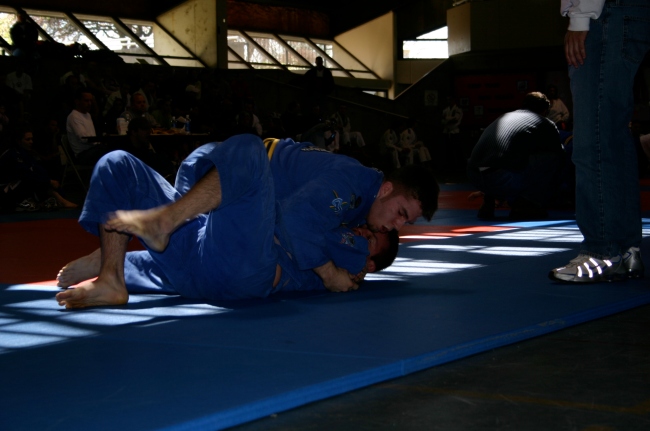Brazilian Jiu-jitsu questions from White Belts
Brazilian Jiu-jitsu questions from white belts.
The following questions are from white belts at my gym. If you have any of these questions yourself I hope the post is helpful.
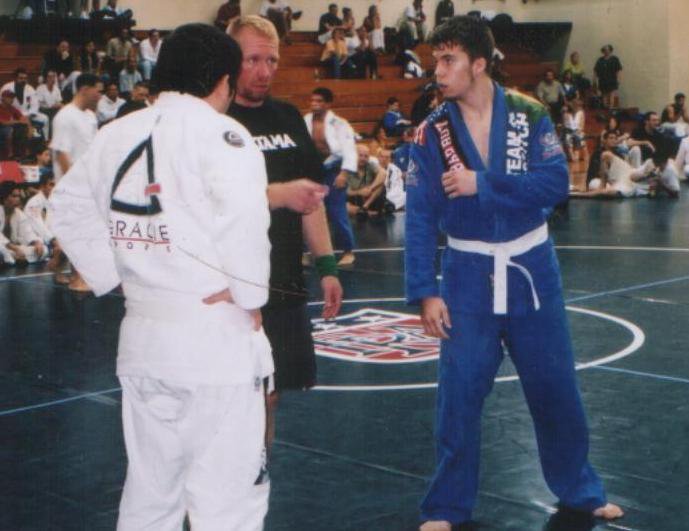
1. How do you learn a move or submission you’ve been obsessing over well enough so that you can use it during rolling?
Drill it! Maybe you learned it from an instructor at your gym or maybe it’s something you saw on the internet. Wherever you picked up the technique, if it’s something you want to really get the hang of, drill it. Especially in the beginning, new moves have a certain uncomfortable unwieldy quality. You feel awkward and slow to execute. To remove that, you need to drill. Start the drilling off as slow technique drilling where you focus on hitting everything spot on. Then as you feel better, speed up the drilling and eventually have your partner offer some light resistance. Some “sloppiness” is ok once you speed it up but keep it within reason. The idea is to remove the thinking involved. You want to be able to initiate the move without having to think when you’re rolling.
2. How do I not get so hung up on getting a colored belt or stripe?
Many BJJ practitioners get caught up, fixating on their belt or stripes. Don’t! Don’t chase belts or promotions. In most BJJ gyms you’re going to wait between 1.5-3 years between belts (depending on your training). That’s just too long of a goal to keep you motivated during the rough times where you get a little down on yourself. I did a post on this subject previously here. https://chewjitsu.net/2013/08/17/10-years-in-bjj-and-10-lessons-ive-learned-part-2/
3. How do I break plateaus or periods where I’m not getting better?
Hitting a standstill, or at least what feels like a stand still, with your Brazilian Jiu-jitsu is unavoidable. We all hit snags along the way. Often times they aren’t as bad as you might think. Many times you’re just comparing yourself to your peers who are learning similar material and rolling with the same partners, and likewise, making their own progress. So with everyone progressing it’s hard to realize that you’re improving.
If you are hitting a true plateau. They’re pretty easy to deal with. Most commonly you’ve gotten slightly complacent or continued to find yourself doing the same moves and techniques in the same positions. Without any change to help spark improvement you’re going to end up in a slow grind.
The solution? Find some new moves, techniques or positions and throw them into the mix. If the moves are in a new position or are completely foreign to you. Then expect to spend time drilling first. After the techniques are drilled to at least a basic level of comfort, start implementing them into your rolling. You’ll probably screw up a bunch and get out positioned or submitted along the way, but the scrambles and failures will help spark new improvements in your game. Gotta crack a few eggs to make an omelet right?
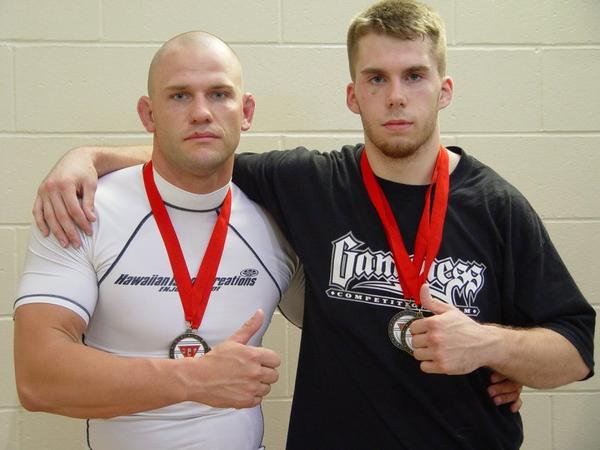
4. How to stay focused on yourself rather than fall in the trap of worrying about others and their progress?
It happens to all of us at some point. We get fixated on how others around us are doing. Maybe someone is making faster improvements than us or maybe they were promoted before us. Whatever it is, it’s important not to fixate on others if it bothers you. The best way to deal with this is to simply start by realizing that you’re worried about someone else’s game rather than your own in an individual sport. Just like wrestling, we all exist on a team but in the end we are individuals. We roll as individuals and we compete as individuals. When you stop and think about how silly it is to be focused on others, its easy to stop thinking about it.
To keep your mind focused try setting goals for yourself. It might be a tournament, losing weight or hitting 3 armbars during the rolling portion of class. Just ask yourself what you’d like to get out of Brazilian Jiu-jitsu and then work towards that. If you’re unsure how to get there, talk to your instructor.
5. What are the best moves to focus on as a white belt / newcomer?
Fundamentals.
6. How long should I wait before I compete?
Whenever you feel comfortable enough to get out there and give it a try. I honestly think the sooner the better. Many people who take on Brazilian Jiu-jitsu and have never wrestled or competed before build tournaments into something that they aren’t. They wait and wait. . . and wait for the perfect opportunity that never comes. I remember one of my guys that waited till he was a high-ranking blue belt before competing. After his matches he said, “I really wish I wouldn’t have waited so damn long to compete.” Remember, competitions are tough but it’s just rolling with people you don’t know in front of people.
7. Why do we start from the knees during rolling?
In my gym we start on the knees during some of the classes for a few reasons. One is to control space. I don’t have enough mat space to house 40 BJJ practitioners doing full rolls from the feet. Two is injuries. Early on I am trying to protect BJJ players from their spazzy selves. Keeping new students grounded helps ease them into the process early on and prevents injuries. In the meantime we can use wrestling and take down classes to teach them the basics of take downs and fundamental techniques like break falling and being in a proper stance. At my gym we do plenty of full rolling from the feet and take down work. In addition we do lots of situational rolling where we might start inside the guard or whatever position we are working on. That said, I do like having people start on the knees from time to time (especially when they are newer) to get them use to pulling someone into the guard or dealing with the scrambling that can happen when people are going for position. I know some people say that starting on the knees is useless and builds bad habits. But I think as long as you are learning how to perform take down and supplementing wrestling and/or judo into the training, it’ll be fine.
8. You’re a black belt and have had your own struggles. How have you dealt with your own trials in Brazilian Jiu-jitsu?
For me, once I started training, quitting was never an option. Just like all of us I had setbacks. Injuries, job and family intervening. . .girlfriends. But I always kept training. Unfortunately I have a hard time relating with people who take on BJJ as just another thing to do. For me it was life changing. But a few things that have helped when things were tough is this.
- Ask yourself, “Do I want to be good at BJJ?” If the answer is yes, be prepared to train for a looooong time.
- I give myself reminders. When I was a blue belt I wore a purple sweat band on my ankle to remind me that I needed to train hard to get my purple belt. As a brown belt I wrote, “you suck, get in the gym!”, as the greeting on my phone after I lost a match in a tournament. The greeting which would stare back at me every time I glanced at my phone helped me from being lazy.
- Blocks along the road are going to come. When I was younger and something got in the way I would get really depressed, eat bad and sulk. Now I’ve grown to expect them and when they come I look for a way around them. Likewise you should expect them and be prepared to work around them. They may come in the form of injuries, jobs or something completely unexpected, but they are going to come. Try to work around them instead of having long layoffs. Consistency is important for BJJ.
- Enjoy the time spent with your training partners and get to know them. The closer you are to them the better off you’ll be.
- One of the most helpful things for me early on was my buddy Chris. We trained together and lived together. We would go to the gym, train and come home and drill on mats I bought for our room. Likewise, get a gym buddy or buddies. Build a relationship with someone in the gym where you can call them up to drill and train during open mats or use each other for support.
- Drilling can of boring. I think of it like eating your broccoli. It’s good for you but you kind of want something else to eat. Drilling is good for your game but it’s always more fun to roll. I know much of my early success came from drilling. I would drill sequences over and over again and they became easier and easier to hit during rolling and competitions.
Just don’t quit. Brazilian Jiu-jitsu is a weird thing. It works for everyone but no one’s path is the same. There isn’t a clear-cut route to success. There are things that you can do to improve. But everyone progresses differently. Just don’t quit. “Black belts are simply white belts that never gave up.” I know that quote gets overused a bit but it’s the truth. When I was a white belt I never thought I’d be a blue belt and a purple belt was absolutely out of the question. I eventually ended up receiving my black belt after 8 years. Do the same. Focus on the day-to-day. Enjoy the training, the health benefits and time spent with your buddies. Soak up as much knowledge as you can. Go compete. Immerse yourself in BJJ, don’t let quitting be an option.
As always,
Thanks for reading
-Chewy
